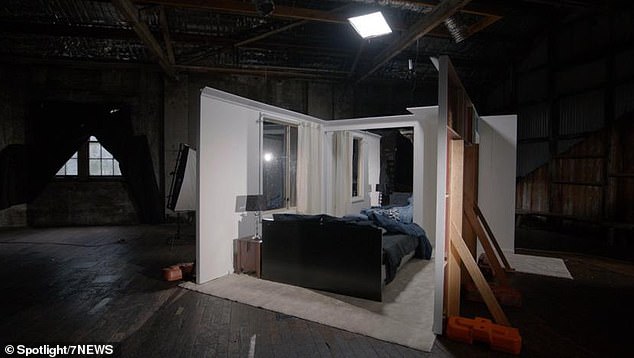Amy Wensley was found dead in her bedroom before cops ruled it a suicide. An expert has blown the case wide open and revealed why it doesn’t add up
A crime scene reconstruction expert claims a mother found dead in her bedroom could not have committed suicide, despite police ruling her death a suicide.
Western Australian mother-of-two Amy Wensley, 24, was found hiding behind her bedroom door at her home in Serpentine, about 55km south of Perth, in 2014.
Mrs Wensley’s body was found with a fatal gunshot wound to her head, which had been inflicted at close range.
Her belongings and her two daughters were found in a car, a clear sign that she left the home she shared with her partner David Simmons.
However, despite the position of her body and the suspicions of the police who were first on the scene, investigators ruled her death a suicide.
Western Australian mother-of-two Amy Wensley (pictured) was found behind her bedroom door in 2014 with a fatal gunshot wound to the head at close range
Following an inquest in 2021, a coroner found she could not rule out foul play and refused to register the 24-year-old’s death as a suicide.
Journalists Liam Bartlett and Alison Sandy launched their own intensive investigation into the case in their multi-part podcast The Truth About Amy.
In the first episode of the podcast, which aired on Sunday, the team enlisted the help of Scott Roder, the boss of forensics company Evidence Room.
The US-based firm has previously provided advice in high-profile trials, including in the case of Derek Chauvin – the officer convicted of the murder of George Floyd – and in murder charges against Paralympian Oscar Pistorious.
Mr Roder used his expertise to recreate the room where Ms Wensley was found dead, using a body double with almost identical physical features to the 24-year-old.
Based on his findings, Mr Roder claimed Ms Wensley’s death was ‘100 per cent not a suicide’.
Mr Roder recreated the scene based on information shared during the 2021 inquest into Ms Wensley’s death, which detailed the room and the position of her body.
Mrs Wensley’s body was found sitting on her right hand, with her left foot against the door and her left hand on her lap.
Police immediately spotted two firearms: a shotgun on the floor, splattered with blood, and a pink .22 caliber rifle leaning against the wall.
The police officer who first arrived on the scene claimed it was “very rare and unconventional” for someone to fire shotgun-style with only one hand.

The multi-part podcast The Truth About Amy enlisted the help of world-renowned crime scene reconstruction expert Scott Roder. Together with his team he reconstructed the room where Mrs Wensley was found dead and the exact details of her position (photo)
Mr Roder said the case contained a number of issues that concerned him, including the position of Ms Wensley’s body and the placement of the weapons.
“The left hand can’t pull the trigger, the right hand can’t pull the trigger. And as a researcher… it becomes quite clear,” Mr. Roder shared 7News in the spotlight.
“She didn’t pull the trigger. Not in a way that is consistent with the wound and the other evidence.”
Mr Roder said another disturbing aspect of the case was the location where the shotgun was found.
The investigation revealed that the blood-spattered shotgun was found at the side of the bed, approximately 5 feet away from Ms Wensley’s upright body.
The evidence also showed that the blood on the barrel of the shotgun indicated that the weapon was close to Mrs. Wensley’s head when it was fired.
‘Well, the answer is very simple. The weapon didn’t end up like that. The gun was positioned like this. Or if someone just said that’s what the gun was like,” Mr. Roder said.
Mr Roder added that he had traveled to Australia solely to recreate Ms Wensley’s case because he believes the findings were ‘so inexplicably wrong’.

Mr Roder (pictured) claimed the case was ‘inexplicably wrong’ and there was evidence Ms Wensley’s death was ‘100 per cent not a suicide’.
The team behind the podcast claim to have uncovered astonishing revelations in their investigation into Ms Wensley’s death.
Episodes include interviews with Ms Wensley’s friends, family, her two daughters and police who attended the scene.
Attorneys and attorneys are also questioned about the evidence collected at the scene and the evidence not collected.
David Simmons’ friends and family are also interviewed, with the team disputing the discrepancies in the memories of one person who was in the house the night of her death and the other who was not.
Mr Bartlett also tracks down David Simmons, who has adamantly denied being involved or pulling the trigger.
